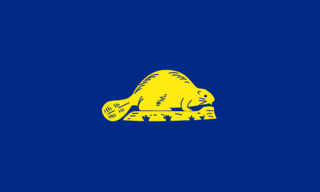
A little over a year ago, I put together a State of the State blog post on Oregon cannabis. At that time, the rules were rolling out in a business-friendly manner, many of our clients were proceeding toward licensure, and the market did not feel saturated. Today, the first two items remain true, but the Oregon market has become fuller and more competitive. Part of this has to do with the state’s lack of residency requirements, part has to do with how easy it is to acquire an Oregon marijuana license, and part is just standard free market dynamics. All of this has been a long time coming.
As of the Oregon Liquor Control Commission’s (OLCC) December 19 report, there were 877 licensed marijuana producers in Oregon, with nearly another 1,000 applications pending. Much of the massive Croptober harvest is drying out and finding its way to the market, and prices for outdoor cannabis seem to be falling fast: in some cases, flower is dropping below $400 per pound. It’s hard to know where bottom is. Program architects may not put the brakes on this anytime soon: the legislature won’t meet again until February (and may not take up the issue at all); and, in the interim, OLCC has no authority to cap the number of licenses awarded. Instead, the agency can only reduce canopy sizes (which it has no plans to do, according to our recent conversations).
Today’s market dynamics were somewhat predictable: given the state of the rules and Oregon’s unique accessibility, we predicted a lot of “triage, consolidation, litigation, guesswork, and general ups and downs” as far back as early 2016. Some of this was almost certainly by design: in the Cannabis Law & Policy class I teach we do a deep dive on markets, and we talk about the general desire for states to allow the price of state-sanctioned pot to stay low, so as to undercut the black market. The countervailing consideration, of course, is the state’s desire to create tax revenues. In an excise tax program like Oregon’s, those revenues are higher when prices hold up at retail.
All of this said, we still think Oregon is a great state for marijuana entrepreneurs, even as the market settles out. Here are three interesting trends we are seeing today:
Consolidation. The Oregon merger and acquisition market is in full swing for cannabis, and our well positioned clients are expanding by acquiring competitive and complementary businesses, up and down the supply chain. Other clients are selling, with the belief that prices are still reasonable, but may crater down the line. In the past week alone, we commenced five different purchase and sale transactions, and we don’t expect a lull in this type of activity any time soon. Interestingly, prices and valuation of these businesses are all over the board. For some basics on buying and selling Oregon pot businesses, see our series here:
Litigation. Unfortunately, when pot businesses fail, litigation sometimes follows. We have seen an uptick in Oregon pot litigation as of late, particularly partnership beefs and creditor actions. We do not expect the dispute dynamic to change anytime soon. For this reason, we have been staffing up with litigators in the Portland office, we and are even putting on a free litigation webinar next month to more fully discuss this topic. (Join us!)
Hemp? Lately, more and more of our clients have shown an interest in growing hemp under licensure by the Oregon Department of Agriculture. Some of these clients are pursuing hemp-derived cannabidiol (CBD) sales in interstate commerce, which the ODA program does not prohibit. Others are preparing to sell CBD into the OLCC stream of commerce, which is finally allowed under Senate Bill 1015 (new rules take effect next week). As to interstate CBD sales, federal law is a cluster, but that hasn’t stopped many big box retailers from trading in this area. Right now, a wave of Oregon cannabis growers are going there, too.























